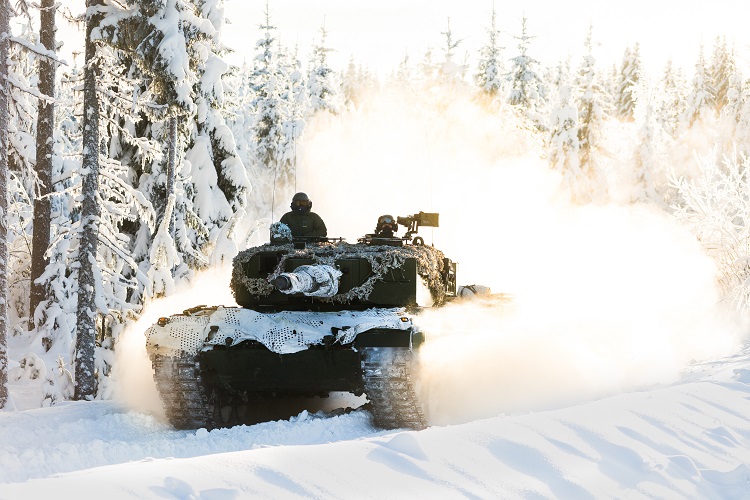
Having debarked from ports in western Sweden, military convoys from various NATO countries are crowding Swedish streets and prompting the police to issue traffic warnings. They are on their way to Norway, where some 50,000 soldiers, airmen and seamen will come together for NATO’s largest military exercise in years. The operation—‘Trident Juncture’— has a clear goal: to demonstrate the alliance’s ability to defend Norway against a foreign aggressor.
There is no need to name the potential aggressor. Obviously, it is not Sweden or Finland, both of which have contributed soldiers to the exercise. During the Cold War, Finland did occasionally come under Soviet pressure as the Kremlin sought to expand its room for manoeuvre. But it always remained firm in its commitment to defend its Nordic and Western identity.
Similarly, Sweden has always abstained from joining NATO, owing to its longstanding geopolitical neutrality and out of solidarity with the Finns. And while Denmark and Norway did join the alliance, they long opted out of hosting foreign forces during peacetime.
But in recent years, Northern Europe’s security landscape has changed. In response to Russian aggression and revisionism, NATO has deployed battalion battle groups in Estonia, Latvia and Lithuania, as well as air force squadrons to police those countries’ skies. And in both Sweden and Finland, defence spending is increasing, and there is an ongoing debate about whether to upgrade the privileged partnership with NATO to full membership.
For its part, Sweden already acknowledges that its territory would fall well within the theatre of NATO operations should a conflict arise in Northern Europe and this realisation has increasingly factored into its own security policy and defence preparations. The Swedish foreign policy establishment understands that any threat to the sovereignty of the Baltic countries or Norway would also be a threat to Sweden’s security. Hence, Sweden is not just participating in Trident Juncture, but also developing a security partnership with Poland to see to the defence of the Baltic Sea area.
Sweden’s deepening partnership with NATO is a far cry from its Cold War-era doctrine of non-alignment. Back then, the custodians of neutrality would have shouted down any hint of collaboration with NATO and the West as an act of treason. The strategy was to persuade the Kremlin that no such thing could ever happen.
But, of course, it was always a charade. The Soviet Union had recruited enough high-level assets in the Swedish government to know about its secret ties to the West. Whatever the Swedish people were led to believe about their country’s neutrality, the Soviets knew it was a lie. Now the ruse is over: full-scale military integration with NATO is in the offing.
Still, full NATO membership remains a controversial issue in Sweden. In the old days, Swedish foreign policy was torn between two very different approaches. On the one hand, Sweden was an extroverted activist, sounding more like a non-governmental organisation than a nation-state; on the other hand, it maintained a hyper-realist ‘deep security’ policy, albeit one that was talked about only in low voices behind closed doors. To this day, the same clash of cultures stands in the way of a rational debate about security policy.
As for Finland, it always had plenty of the second approach, but almost none of the first. And in the absence of much domestic disagreement, it has had an easier time adjusting to new geopolitical realities. For example, Finland has explicitly said that it considers NATO membership to be an important option for its security policy, which is something that the Swedish centre-left has not yet been willing to countenance.
Nevertheless, with Trident Juncture, Swedes will see a Swedish-led brigade (comprising Swedish and Finnish units) join with NATO forces in a large-scale defence drill. They will witness the extent to which the Swedish, Finnish and Norwegian air forces are already integrated. And they will watch as Finland leads naval exercises in the Baltic Sea.
In the years ahead, Sweden will continue to move closer to NATO. Joint exercises will lead to deeper operational alignment and the establishment of common deterrence capabilities for all of Northern Europe and the Baltic Sea area.
To be sure, today’s mobilisation is not driven by an acute threat from Russia. But Russia’s aggressive effort to modernise its military all but requires the West to increase its own defence capacity in the region. We need to send a clear message that opportunistic acts of aggression will be answered, both now and in the future. By preparing a proper defence, we can ensure peace and stability in the region, which is a prerequisite for moving towards a more constructive relationship with Russia in the long run.

